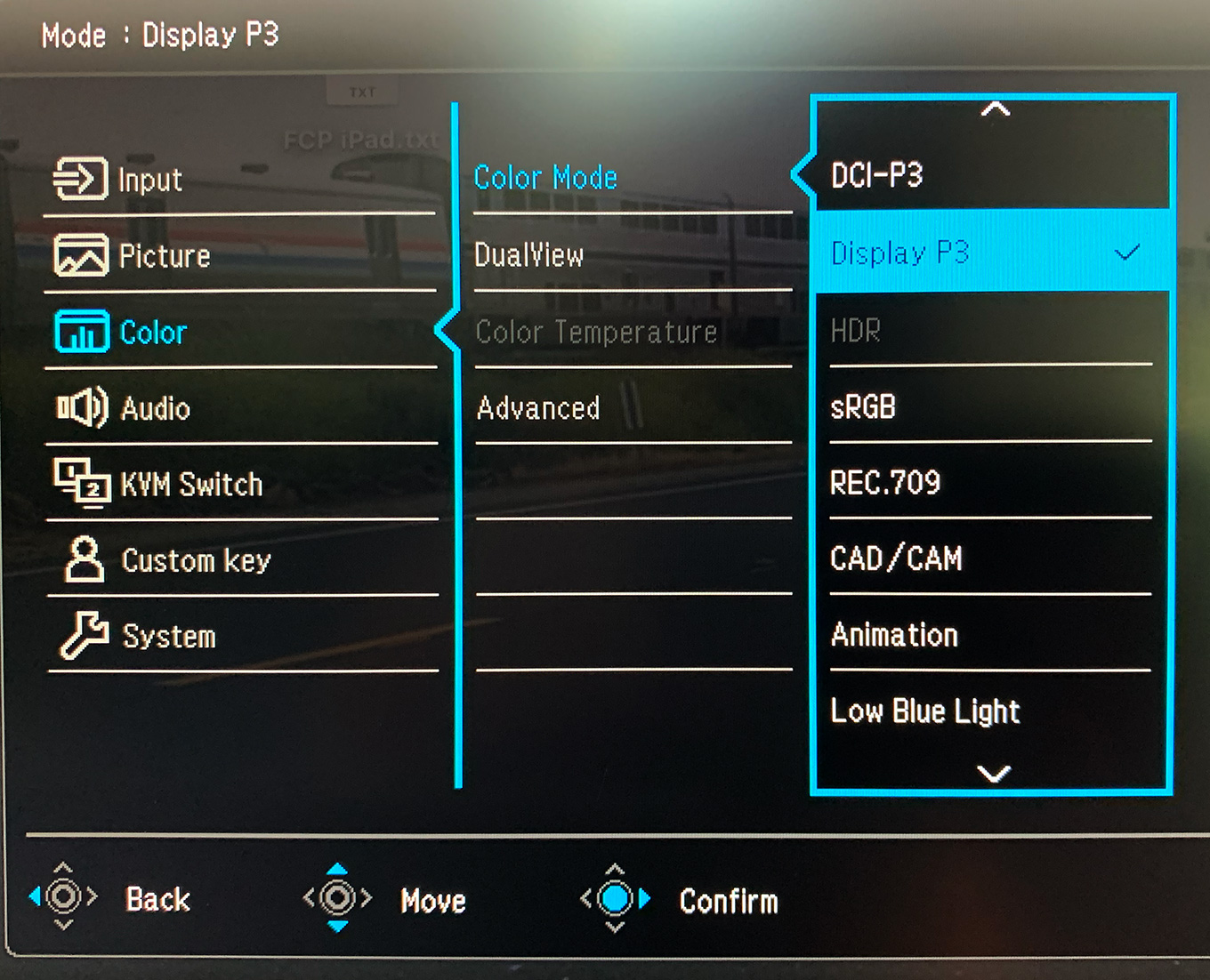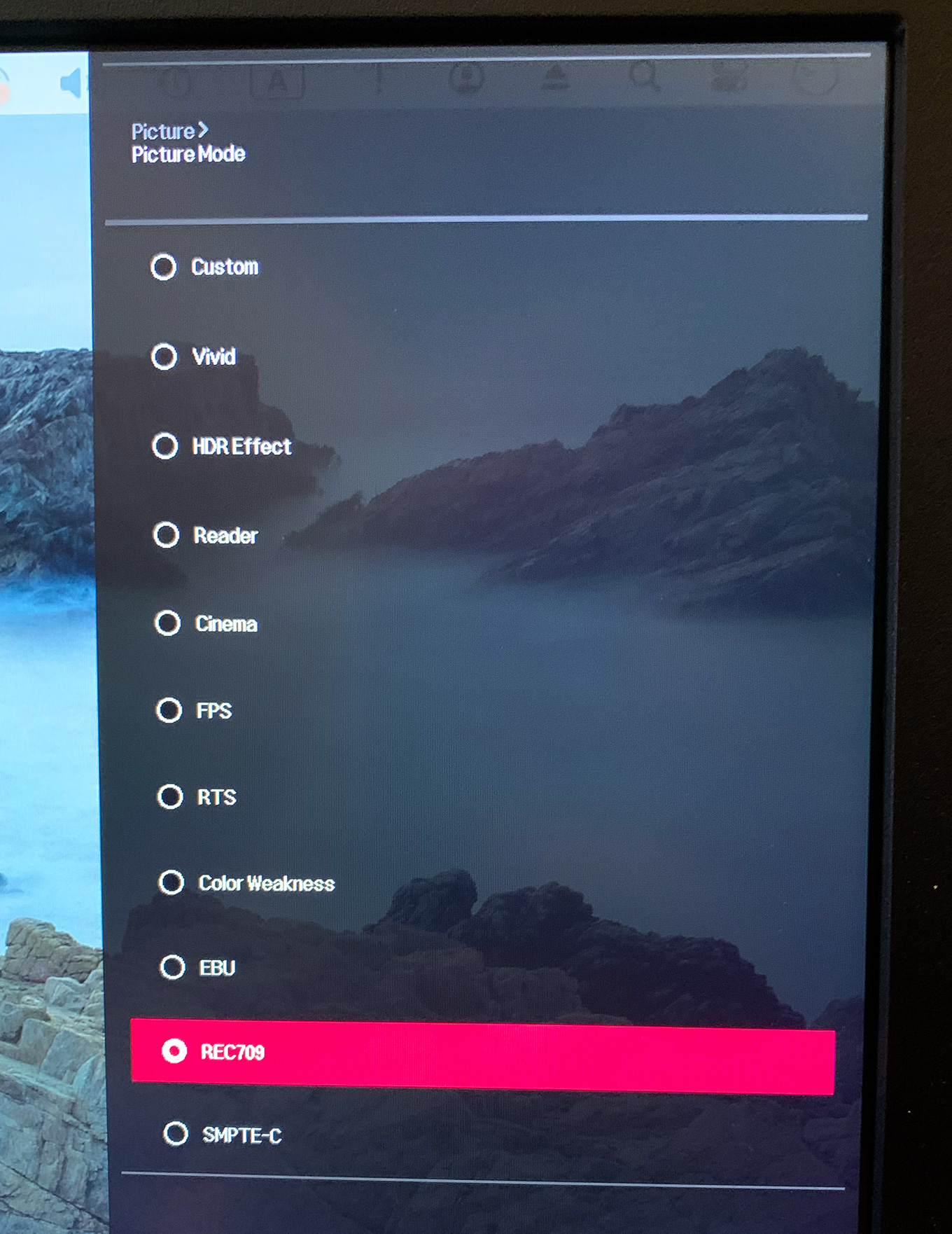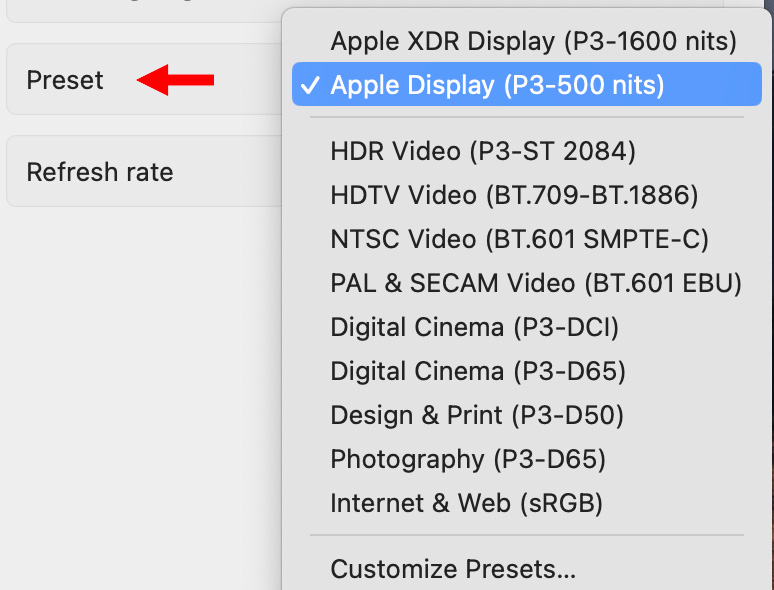 Recently, while writing a review of the BenQ PD2725U monitor, I realized that I have described how to change color space settings on external monitors incorrectly for years.
Recently, while writing a review of the BenQ PD2725U monitor, I realized that I have described how to change color space settings on external monitors incorrectly for years.
Here’s what you need to know.
THE KEY RULE
Never change color settings on the computer.
Change color settings on the monitor.
TWO TYPES OF MONITORS
NOTE: I am indebted to Art Suwansang, BenQ Global Ambassador, for providing the technical background I relied on for this article.
There are two ways to calibrate colors on a monitor: hardware and software. High-end monitors such as Sony, Flanders Scientific, Azio and others use hardware calibration. This requires a chip inside the monitor that specifically handles color calibration and display. These monitors are priced in the thousands of dollars.
Software calibration handles calibration in software, where color changes are made on the video card. (All Apple monitors, including the Pro XDR HDR display, use software calibration.)
Also, there is a YouTube video featuring a BenQ color expert talking about the “danger” of connecting computer monitors using HDMI cables causing inaccurate color. While this is a true statement, it only applies to hardware-calibrated monitors. For software-calibrated monitors, how you connect the monitor is unimportant and yields the same results.
ACCURATELY CHANGE COLOR SPACE SETTINGS

We use the Apple Display Settings to set the Color Profile of the computer to match the profile of the monitor. It will have the monitor name in the profile name.
The easiest way to think about what’s happening behind the scenes is this analogy: The computer feeds a high-quality “raw” image to the monitor, defined by the monitor profile. The monitor then takes that feed and applies a LUT to it so that the image then conforms to a specific setting; for example Rec. 709, sRGB, P3, and so on.
In other words, we change settings on the monitor, not the computer.
BRIGHTNESS SETTINGS
Setting correct brightness levels requires a display calibration tool from Calibright/Xrite or DataColor.
Since SDR video only displays from 0 to 100 nits (which equals 100 IRE), I set my monitor brightness to 120 nits, which covers both sRGB and Rec. 709.
EXAMPLE ON-SCREEN DISPLAYS
Monitor color space settings are controlled using an On-Screen Display (OSD).

For example, these are some of the color spaces BenQ monitors support.

These illustrate the color settings of an LG HDR 4K monitor. Notice that, with the exception of Rec. 709, SMPTE-C and, maybe, EBU, the rest of the settings are descriptions, not specs.
NOTE: I was surprised to see that sRGB was not one of the options on the LG monitor.
CONFIGURE A MAC DISPLAY

The default setting for Mac laptop and iMac monitors is fine for most general office work. However, the Display settings panel does provide specialized presets for specific tasks, as shown in the screen shot above.
These are Apple Support notes for the four settings for Apple silicon systems that are most common for video workflows:
NOTE: Here’s a link that describes all the Display settings
To be truthful, I’m still unclear on whether we need to set the Mac monitor’s specs to match, say Rec. 709, or whether Premiere and Final Cut set the color space for the monitor automatically. I’ve reached out to both Apple and Adobe for clarification and will share it when I learn more.
For now, I set the color space of my external monitors as I wrote in this article. I set the MacBook Pro monitor to Apple Display (P3 – 500 nits) because I don’t need the brightness of HDR for my work.
SUMMARY
In the past, I thought we needed to configure monitor color space using settings in the macOS. Instead, that task is best handled by the monitor itself. Once you understand that shift in thinking, configuring the color space of any monitor becomes a lot easier.
4 Responses to How to Accurately Change Color Space Settings on Mac Monitors
The Mac, at the system level, supports ColorSync profiles, which processes the applications window display to the monitor through it’s custom correction. This frees the application from needing to know anything about the monitor’s gamma and color space.
When a monitor is calibrated, the user inputs what standard the calibration is to be done against eg rec 709 and gamma 2.4 for example. Each standard will require a separate ColorSync profile. When the user is working with a particular deliverable space eg SD or HDR, the monitor should be set to that.
This is also true for photo editing, but with standards applicable to the end display.
David:
Thanks for your comments. Monitor calibration is still something I’m learning more about.
Larry
It’s such a rabbit hole. Steve over at Light Illusion in the UK would be a great resource as well. Light Illusion creates the software Colourspace for calibration.
Eric:
Thanks for the referral. I haven’t had the pleasure of meeting Steve, but here’s the link to his website:
https://www.lightillusion.com
Larry